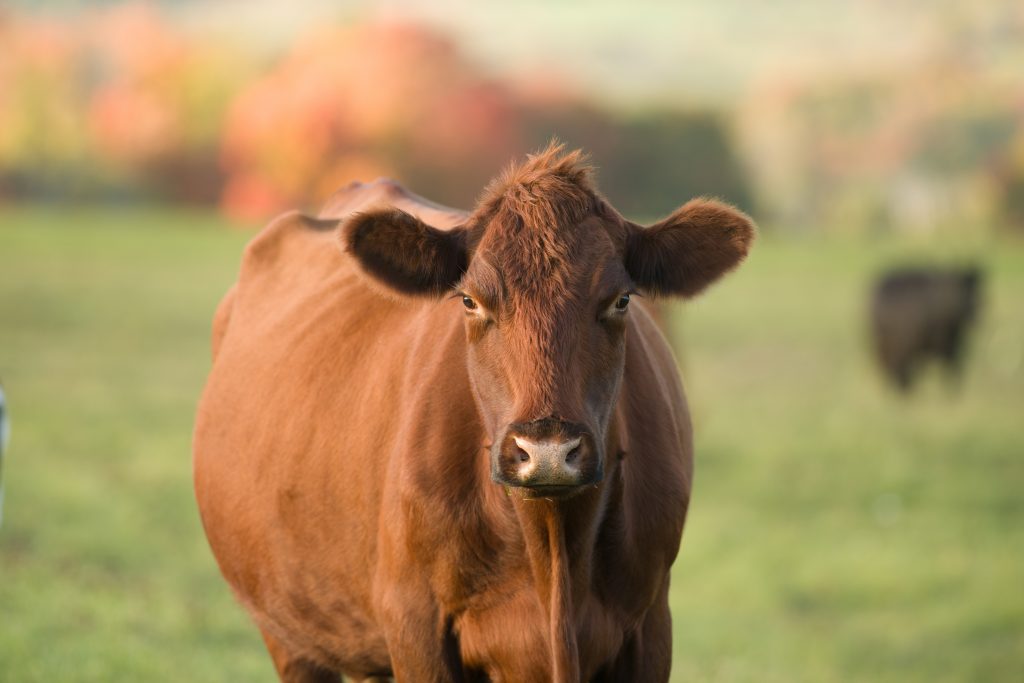
Mark Johnson, Oklahoma State University Extension Beef Cattle Breeding Specialist, offers herd health advice as part of the weekly series known as the “Cow Calf Corner,” published electronically by Dr. Peel, Mark Johnson, and Paul Beck. Today, Johnson talks about nutrition for the cowherd.
As we near the winter months and the time of year when feeding harvested forage becomes the norm in Oklahoma, we address the topic of daily nutritional requirements of the cowherd. Grazing and feed expenses account for about 42% – 52% of the input cost of a cow-calf operation. Knowing the nutritional needs of our cows helps us cost effectively meet their needs. Over feeding or underfeeding both rob the profit potential from cow-calf operations. During the normal production cycle cows should gain some weight/body condition during the dry stages and lose some weight/body condition while nursing a calf. With that in mind, having cows at a BCS 5 – 6 going into calving season is optimum. This means that cows are in good shape and have ample energy reserves to draw upon when the “spike” in Crude Protein (CP) and energy (TDN) requirements occur post-calving as the cow begins lactation. Cows need to be in good shape at the beginning of calving season to reduce the rebreeding interval and stay on schedule to breed, calve and raise a calf to weaning each 12 months.
Assuming we have an ample supply of good quality water and an adequate vitamin/mineral supplementation program, the two primary nutritional requirements of cows are CP and TDN. In normal weather, there are three primary influences on the daily requirements of both:
1 – Mature Weight
2 – Level of Milk Production
3 – Stage of Production
Where cows are now in the production cycle and when they will start calving should be considered when making management decisions regarding feeding. The example below follows a 1,300 pound cow through a normal production cycle during the middle trimester of pregnancy, the final trimester of pregnancy, and the first 90 days post-calving based on her level of milk production.
During the middle third of pregnancy, the 1,300 pound mature cow needs:
- CP = 1.64 pounds per day
- TDN = 11 pounds per day
The same 1,300 pound cow in the final third of pregnancy needs:
- CP = 1.84 pounds per day
- TDN = 13.3 pounds per day
The increased nutritional needs reflect not only the cow’s maintenance requirements but also the increased growth and development of the fetus as calving draws near.
After calving, during the first 90 days of lactation, the same 1,300 pound cow will have increased nutritional requirements based on how much milk she is producing:
If giving 25 pounds of milk per day at peak lactation, she will need:
- CP = 3.4 pounds per day
- TDN = 19.3 pounds per day
If giving 35 pounds of milk per day, she will need:
- CP = 4.2 pounds per day
- TDN = 22.2 pounds per day
In summary, the same cow has a dramatic rise and fall in protein and energy needs over the normal production cycle. Knowing these requirements is essential to cost effective feeding of the cow herd. Managing our nutritional program correctly plays a huge role in reproductive performance. More details about nutritional requirements of beef cows can be found in the fact sheet referenced below.
Reference: Nutritional Requirements of Beef Cattle. OSU Cooperative Extension Fact Sheet E-974
Below, Mark Johnson, OSU Extension beef cattle breeding specialist, says beef for Thanksgiving is always a good choice on SunUpTV from November 20, 2023.














